
What would the world’s most famous skylines look like without the influence of immigration? Financial services provider Remitly has produced a collection of striking images that reveal what cities around the world would look like if buildings designed by architects from outside of the country in question were removed.
London, New York City, Sydney, Paris and Shanghai would all look very different – the drastically changed skylines celebrate the importance of foreign influences on the places we call home, with notable buildings from the Shard to Brooklyn Bridge and Sydney Opera House having been designed by people born in other countries. In total, research of 200 notable buildings across 15 cities found that 64% were designed by immigrants and those from abroad.
London
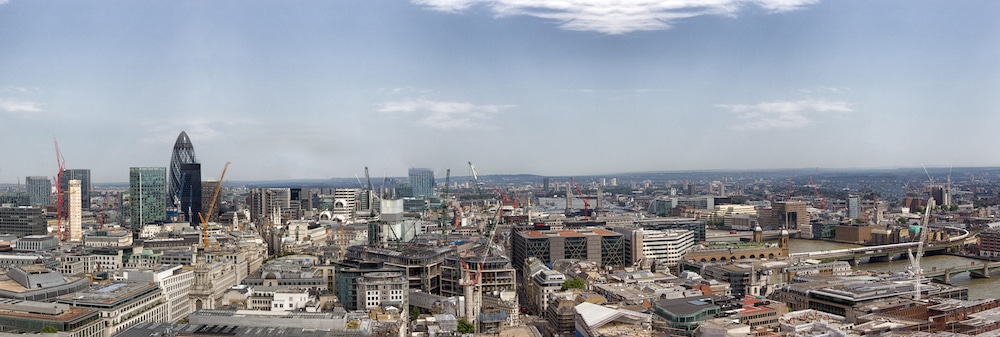

Italian architects had a major part to play in the development of the London skyline, with Italian-born Richard George Rogers designing The Leadenhall Building and Renzo Piano credited for famed skyscraper The Shard and The News Building. Argentine-American César Pelli is also responsible for more than one building in this skyline, as One Canada Square and the Citigroup Centre are both his works of art. Swiss Architect Richard Seifert and Uruguayan Rafael Vinoly are responsible for the designs of Tower 42 and 20 Fenchurch street respectively, and Indian Sunand Prasad was tasked with reskinning hospital Guy’s Tower. The work of British architects also features heavily in London, with St. Paul’s Cathedral, Big Ben, The London Eye, Tower Bridge and Buckingham Palace all designed by Brits.
New York City

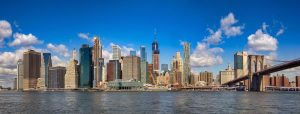
New York’s world renowned and politically moving Statue of Liberty was designed by Frenchman Frederic Auguste Bartholdi, acting as an emblem for immigrants and originally hosting the Immigration Museum. This global influence continues through the skyline, with Slovakian architect Emery Roth becoming highly influential on this New York skyline, with 55 Water Street, 200 Water Street, 111 Wall Street and the MetLife Building coming to life from his designs. The Empire State Building, the world’s tallest building at the time, was built by Canadian and American firm Shreve, Lamb and Harmon; whilst the iconic Brooklyn Bridge was created by John Augustus Roeblind from Germany. Finally, architects including Brit Rogers Strick Harbour and Japanese architect Fumihiko Maki have helped to rebuild the skyline of Lower Manhattan’s Financial District, following the tragic events of 9/11, having designed the likes of 3 and 4 World Trade Center.
Paris
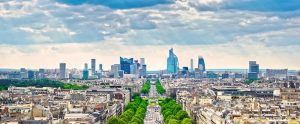
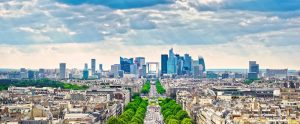
Paris is famed as the city of love, and no doubt architecture plays a major part in creating the enchanting atmosphere the city affords. Although many of the buildings in Paris were the work of French architects, such as the Eiffel Tower, Arc de Triomphe and the Notre Dame Cathedral, foreign architects also had a major role to play in the development of dreamy Parisian skylines. Notably, La Grande Arche de la Defense, arguably the most recognisable building in the La Defense skyline, was designed by Johan Otto von Sprecklesen from Denmark. Americans have the most influence on this skyline, with American firm Skidmore, Owings and Merrill credited for the Tour Areva and Defense Plaza. In addition, The Carpe Diem was created by firm Robert Stern and The Tour CB21 (formerly Tour Gan) by celebrated architect Max Abramotivz, both of American origin. Master Chinese architect Ieoh Ming Pei is the only Asian architect to influence this skyline, with his design coming to life in the Tour EDF. Other notable Parisian buildings built by foreign architects include the Opera Bastille and Centre Pompidou.
Sydney
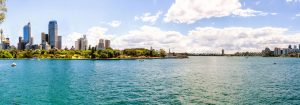

The Sydney Opera House and the Sydney Harbour Bridge render this one of the most recognisable skylines in the world, and interestingly it was Danish architect Jorn Utzon who designed the former, whilst British firm Dorman Long created the latter. In fact, due to Australia’s colonial history, the work of British architects features regularly in this skyline: Peddle Thorp Walker designed both the Gateway Plaza (1 Macquarie Place) and the AMP Centre; British firm Joseland and Gilling are responsible for Suncorp Place, and Norman Foster created Deutsche Bank Place. Italian Renzo Piano’s work makes another appearance, this time for Aurora Place, whilst French Jean Nouvel created One Central Park. Canadian-American Frank Gehry was responsible for the Dr Chau Chak Wing Building, however Australian architects also influenced the skyline through buildings such as Governor Phillip Tower, Shangri-la Hotel, Sydney Tower and the Powerhouse Museum.
Shanghai
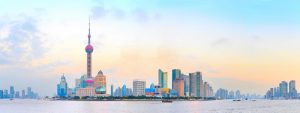
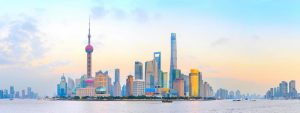
The Pudong skyline is one of the most iconic, modern skylines in the world. Whilst the Oriental Pearl Tower and the Jin Mao Tower were designed by Chinese nationals, the distinctive Shanghai Tower was created by American Marshall Strabala and the Shanghai World Financial Centre (also known as The Bottle Opener) was the work of American firm Kohn Pedersen Fox. Kohn Pedersen Fox were also credited with Shanghai Wheelock Square and fellow American firm Callison designed Grand Gateway Shanghai I & II. Although American architecture makes up a significant portion of Shanghai’s skyline, the work of Japanese architects is also reflected in the Bank of China Tower, Aurora Plaza and One Lujiazui – all by Japanese firm Nikken Sekkei. Canadians were involved in the K11 via Bregmann & Hamann, and Argentine-American Cesar Pelli & Associates designed the Shanghai IFC.




